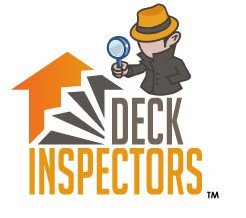California’s coastline, climate, and architecture make outdoor decks, balconies, and stairways a common feature in multifamily buildings. But with these features come serious safety responsibilities. The California legislature passed SB 721 and SB 326 Inspections to address aging infrastructure and prevent tragic structural failures, such as the Berkeley balcony collapse in 2015. While the two laws share a similar purpose, they apply to different types of properties and work in tandem to safeguard residents throughout the state.
Understanding the Difference Between SB 326 and SB 721
While both laws focus on the safety of Exterior Elevated Elements (EEEs)—like balconies, decks, walkways, and staircases—there are some key distinctions in who they apply to and how they’re enforced.
-
SB 326 applies to condominium buildings (common interest developments) with three or more units. This law requires HOAs to complete regular inspections of EEEs to ensure safety.
-
SB 721 applies to apartment buildings (non-condo multifamily buildings) with three or more units that are rented out to tenants.
Both laws require property owners to hire licensed professionals, such as structural engineers or qualified deck inspectors, to assess and document the condition of these structures. The goal? Identify hidden hazards, such as dry rot, corrosion, and structural fatigue, before they lead to costly repairs or life-threatening accidents.
Here’s a quick breakdown of how these two laws compare:
| Feature | SB 326 | SB 721 |
|---|---|---|
| Applies To | Condominium/HOA Properties | Apartment Buildings |
| Effective Date | January 1, 2020 | January 1, 2019 |
| Inspection Deadline | By January 1, 2025 | By January 1, 2025 |
| Frequency | Every 9 years | Every 6 years |
| Inspector Requirements | Licensed architect or engineer | Licensed architect, engineer, or B-license contractor |
| Report Filed With | HOA Board | Local Building Department |
Why SB 326 Inspections and SB 721 Work Best Together
While they serve different ownership types, SB 326 Inspections and SB 721 together form a comprehensive safety net for millions of Californians. They ensure that regardless of whether someone rents an apartment or owns a condo, the decks and balconies they use daily are regularly inspected and properly maintained.
By mandating routine inspections, both laws encourage preventative maintenance, early detection of hazards, and financial planning for long-term repairs. For HOAs and apartment owners, this means greater peace of mind and a more precise roadmap for compliance and safety.
FAQ: Quick Answers About SB 326 and SB 721
Q: Do I need to comply with both SB 326 and SB 721?
A: No. If you own a condo in a common interest development, you follow SB 326. If you own rental apartments, SB 721 applies.
Q: What happens if I miss the inspection deadline?
A: You could face fines, legal liability, and insurance complications. It’s best to act early and schedule your inspection in advance.
Q: Who can perform the inspection?
A: Only qualified professionals, such as structural engineers, architects, or licensed contractors (B-license), depending on the bill.
SB 326 Inspections Conclusion
Together, SB 326 Inspections and SB 721 create a safer environment for all California residents by holding property owners accountable for maintaining their structures. Whether you manage an HOA or own apartment complexes, proactive compliance is the best way to protect both your investment and your residents.
Click here to get in contact with an expert from Deck Inspectors today and schedule your inspection.
Deck Inspectors for Southern California is happy to offer our services in Los Angeles County, Riverside County, Orange County as well as San Diego County and all Southern California surrounding areas like: Los Angeles, Irvine, Long Beach, La Jolla, Glendale, Pasadena, Santa Ana, Huntington Beach, Dana Point, Burbank, Santa Monica, Anaheim, Temecula, Encinitas, Chula Vista, Vista, Mesa, San Diego, Oceanside, Escondido, Carlsbad, Poway, Mission Viejo, and El Cajon.



